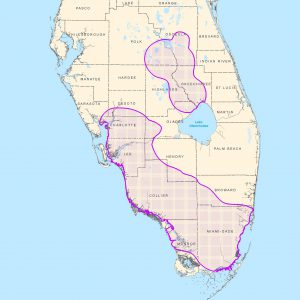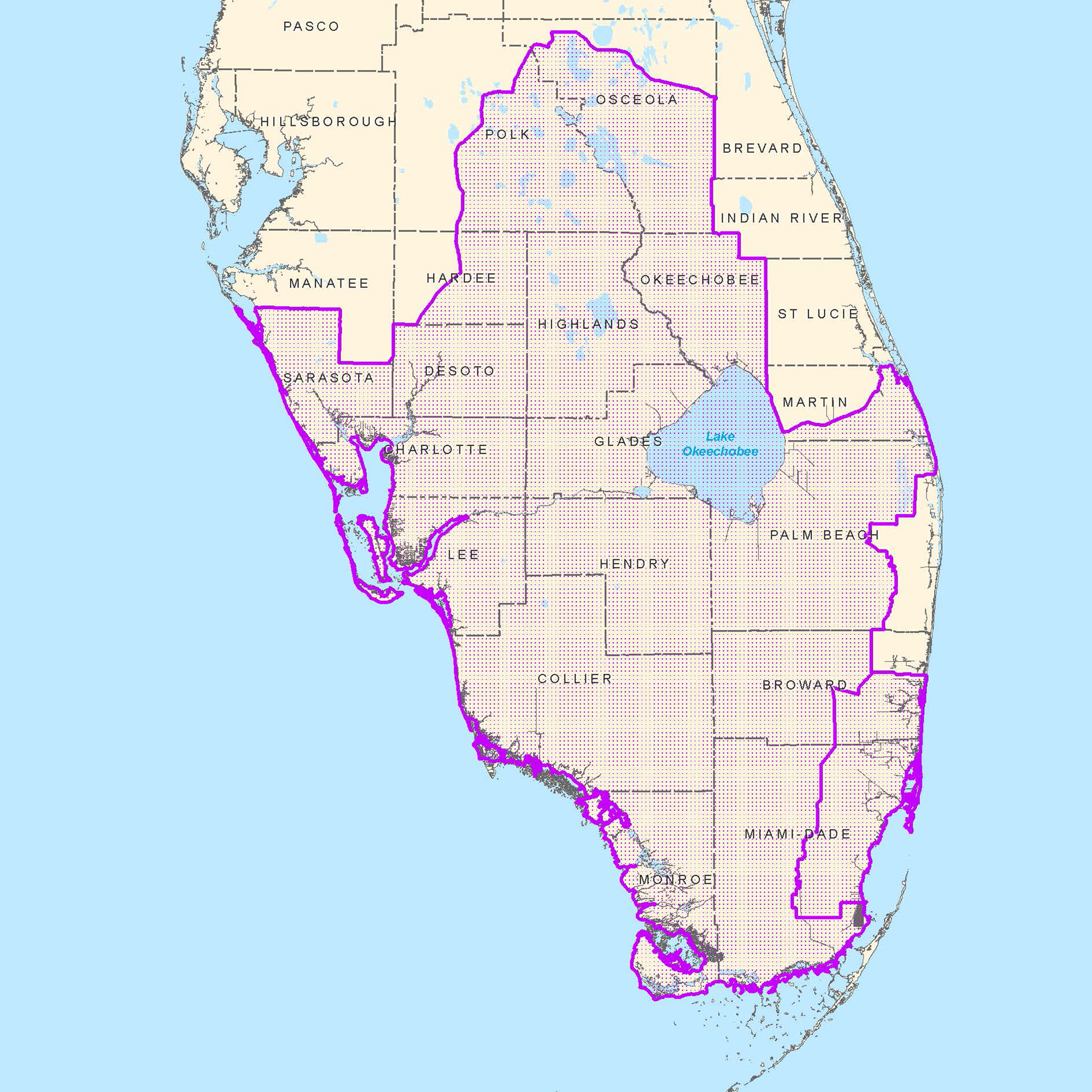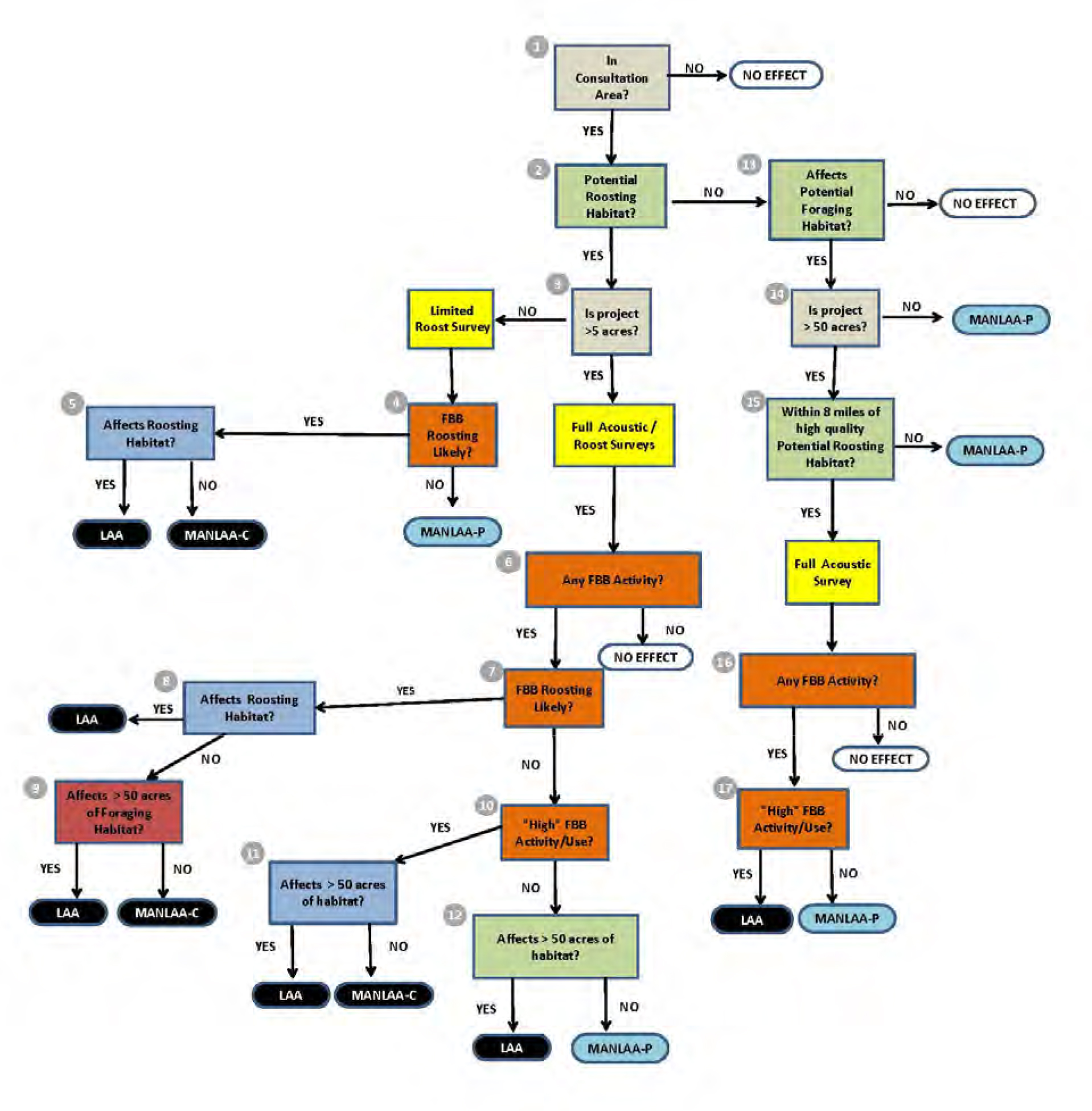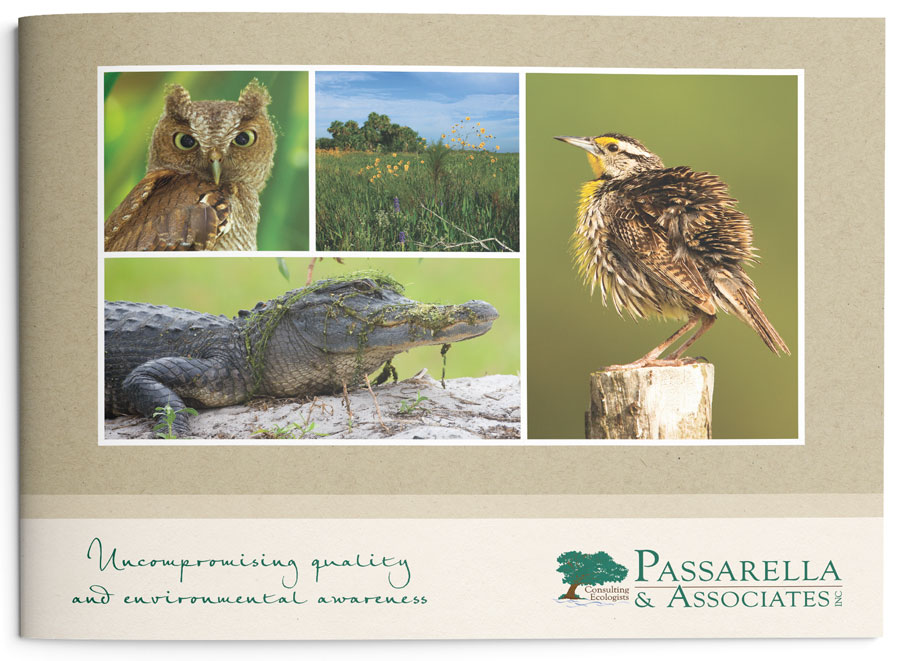The Florida Bonneted Bat
Did you know that Florida happens to be home to the largest and rarest insect-eating bat in North America, the Florida Bonneted Bat? Also known as the Florida mastiff bat, it can reach a length of 6.5 inches and have a wingspan of 20 inches. The fur color can vary in color from black to brown to grayish. It has large, rounded ears which give the bat its bonnet or hooded appearance, hence the name. Another very cool thing, the Florida bonneted bat is the only bat in North America that catches insects using sonar that we can hear (most bats use ultrasonic signals)! Which means there is a chance you can hear their calls at night flying overhead.
It gained federal protection under the Endangered Species Act in October 2013.
Bonneted bats have been found to forage in a variety of habitats including semitropical forests with tropical hardwood, pineland, and mangrove habitats, as well as man-made areas such as golf courses and neighborhoods.
Florida bonneted bats typically form small colonies with numbers ranging from just a few individuals to dozens. They appear to prefer to roost in cavities whether natural or artificial. Known artificial roosts are in specially made bat boxes, but they may also roost in roofs (they like barrel tile roofs)!
While its range was historically thought to be limited to just the southern part of Florida, the U.S. Fish and Wildlife Service (USFWS) Florida Bonneted Bat consultation area fell within Polk, Osceola, Highlands, Okeechobee, Sarasota, DeSoto, Charlotte, Glades, Lee, Hendry, Collier, Broward, Monroe, and Miami-Dade counties.
In 2019, the USFWS expanded the consultation area further to now include all of Sarasota, DeSoto, Highlands, Okeechobee, Glades, Charlotte, Lee, Hendry, Collier, Monroe, Miami-Dade and greater portions of Polk, Osceola, Broward and new areas within Hardee, Martin, and Palm Beach counties.


Don’t worry, our ecologists can help! We are extremely knowledgeable on the state and federal guidelines and are experienced in identifying Florida bonneted bat habitat, conducting surveys to determine their presence/absence, and can provide you with the steps you will need to take.
Understanding the 2019 Guidelines
Consultation Area
The consultation area for the Florida bonneted bat (FBB) represents a general range of the species and was determined from various studies that showed the possible range of the bat. FBBs are very efficient fliers and can travel distances of greater than 20 miles in a single night! Because of this, they are able to potentially roost across large ranges. Typically, FBBs roost in forested areas with plenty of large pine trees, royal palms, or other suitable structures, but are also known to use houses or other buildings in which they can wedge into. Areas with large amounts of open space such as lightly forested wetlands or agricultural fields and pastures are also susceptible to FBB presence. This is because the bats use these areas to forage, or feed. If your proposed project is within this consultation area, you may have to comply with the new guidelines and seek further consultation with the USFWS.
Consultation Flowchart
Included within these guidelines is the FBB consultation flowchart, designed to assist with evaluating potential effects to the FBB from a proposed project. The “Likely to Adversely Affect” (LAA) and “May Affect, but is Not Likely to Adversely Affect-C” (MANLAA-C) determinations require further consultation with the USFWS. A “May Affect, but is Not Likely to Adversely Affect-P” (MANLAA-P) can be reached using required best management practices (BMPs) that are included within the guidelines.

Best Management Practices
The best management practices within the guidelines incorporate what is known about the FBB and also include recommendations that are beneficial to all bat species in Florida. These BMPs are intended to provide recommendations for improving conditions for use by Florida bonneted bats, and to help conserve Florida bonneted bats that may be foraging or roosting in an area.
The BMPs required for a project vary depending on how the project impacts the bats, which can be determined by following the consultation flowchart.
If your project requires these BMPs, or you think your project may, your project site might need to undergo Consultation with the USFWS and we can help!
How We Can Help
Limited/Full Roost Surveys and Reports
Roost surveys and their associated reports are one of the potential requirements listed within these guidelines. Our ecologists are experienced in identifying potential roosting areas for the FBB. Once these areas are identified, we can conduct surveys to locate potential roost structures. If potential roosts are located, our ecologists inspect the potential roosts using a video probe (“peeper”) to identify any potential FBBs and their sign.
Limited/Full Acoustic Surveys and Reports
Acoustic surveys and their associated reports are another one of the potential requirements listed within these guidelines. These surveys can identify if FBBs are utilizing a project site.
Using specialized equipment that our ecologists are trained and experienced in setting up, and operating, we can capture the echolocation calls of bats utilizing a site. Our ecologists are then able to identify any FBB calls by analyzing them through specialized software.


